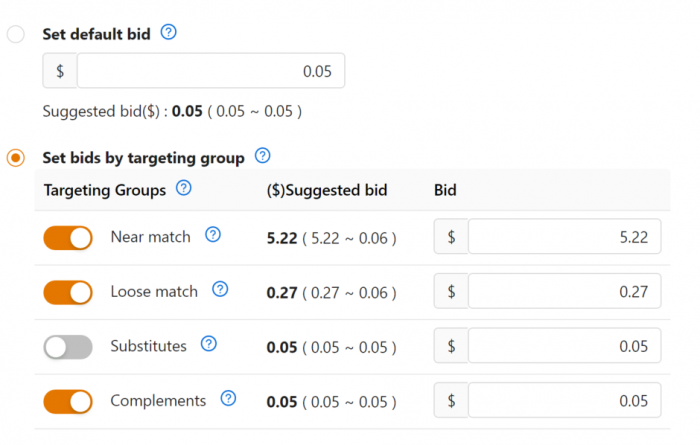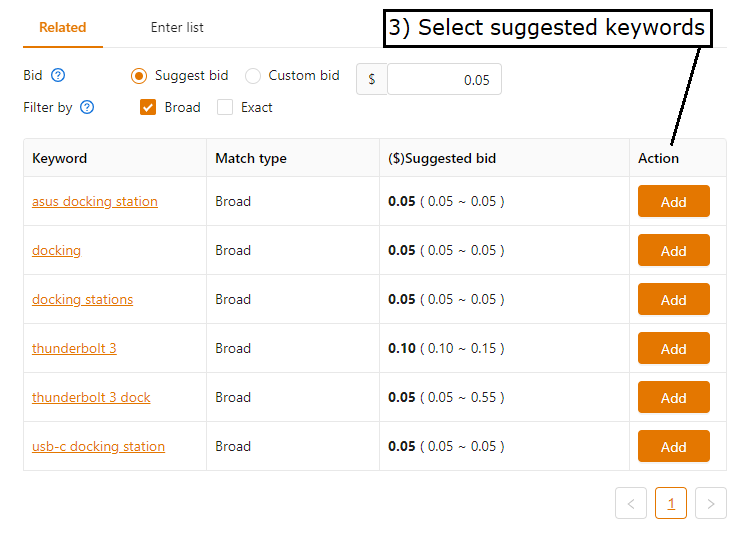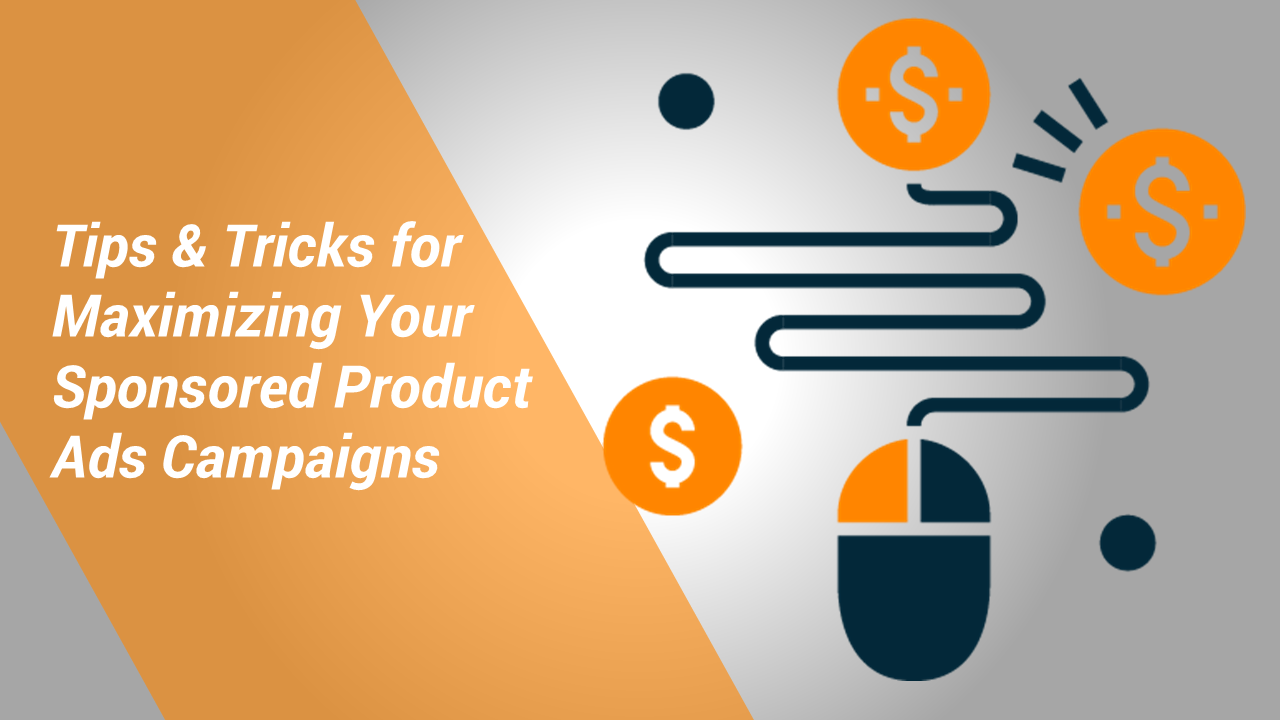With over 40 million tech savvy customers shopping on Newegg, getting your products to stand out from the competition is mission critical to your business’ success. Utilizing and optimizing sponsored product ad campaigns makes it easier for your customers to find your products. Whether you are looking to boost your sales conversions or increase impressions, securing premium placements throughout the digital shopping path significantly increases your reach and influence. Last month, Newegg introduced its Sponsored Product Ads tool, which enables sellers to bid for premium placements throughout newegg.com. Winning placements is just one side of the same coin.
Today’s article will highlight tips and tricks that ensures you’re maximizing your campaigns’ performance. If you haven’t learned about sponsored product ads on newegg.com, check out this primer before reading on.
Setting Your Campaign Up For Success
When using Newegg’s Sponsored Product tool, you will need to manage your campaign’s performance while it’s active. Before starting any campaign, you should nail down clear and attainable goals and determine how you plan to achieve them. Without this knowledge, you may end up finding that your campaign’s performance is less than ideal.
To help you avoid these pitfalls, we’ve outlined these tips and tricks that will:
- Outline how to set goals for your campaigns
- Help you choose the right match type
- Optimize your sponsored product ads campaigns to accomplish the goals you have set
- Decide if you should adjust the campaign’s time frame and/or budget
In order for your campaigns to perform at the highest levels, all of these areas should be taken very seriously and should not be overlooked.
Choosing Between Sales and Brand Awareness
A successful sponsored product ads campaign is the reward of careful planning and execution. Start by asking yourself are you looking for more sales or greater brand exposure? Typically, a sponsored product ads campaign will generate success for one but not both. Targeting both will create conflicts within your campaign that will likely prevent you from achieving either the sales or brand awareness goals.
Sales / ROI Goal
Greater sales is the goal of most businesses and something that will require close monitoring of metrics like clicks, spend, sales, average cost of sales (ACOS), cost per click (CPC), orders, etc. These metrics should have very specific values assigned to them before you start the campaign. For example, most sellers should observe that the ACOS is roughly 10% and no higher. Anything higher than this risks you generating less than you spend which is counterproductive to your efforts.
Brand Awareness
If you are aiming to increase brand awareness, then you need to only be interested in impressions, click-through rate (CTR), and clicks. This is because your priority is not in driving sales with the campaign. Instead, your marketing goal is to make sure that as many people as possible are seeing your ads and clicking on them.
Choosing a Match Type Tactic
Once you’ve determined what your business goals are you can optimize your sponsored product ads by selecting the matching criteria that will best support them. Currently, Newegg offers three match types for SPA campaigns.

Automatic Targeting – Auto targeting is a match type that leverages Newegg’s proprietary relevancy algorithms to automatically match your ads with relevant keywords. This method of targeting is the most hands-off and will let you set one bid level for all keywords your ads are matched to or set multiple bid levels based on your target group. There are four match types that can be chosen for automatic targeting which should be used to narrow or widen the audience for your product. Generalized targeting increases the quantity of views to your ad where more specific targeting narrows the views while more closely matching to exactly what the searcher is looking for. The match types are:
- Near match – your ad will be seen by shoppers who use keywords that are closely related to the products in your campaign group. If your product is “400 thread count cotton sheets,” we’ll show your ad when shoppers use search terms like “400 thread count”, “cotton sheets” and “400 count sheets.”
- Loose match – your ad will be seen by shoppers who use keywords that are loosely related to the products in your campaign group. If your product is “400 thread count cotton sheets,” we’ll show your ad when shoppers use search terms like “bed sheets”, “bath sheets” and “bath towels.”
- Substitutes – your ad will be seen by shoppers who use keywords that are substitutes of the products in your campaign group. If your product is “400 thread count cotton sheets,” we’ll show your ad when shoppers use search terms like “300 count cotton sheets”, “queen 400 count sheets” and “500 count sheets.”
- Compliments – your ad will be seen by shoppers who use keywords that are compliments to the products in your campaign group. If your product is “400 thread count cotton sheets,” we’ll show your ad on detail pages that include “queen comforter” and “feather pillows.”
Manual Targeting – This type gives you the option of choosing exactly what keywords you would like to bid on (“Enter list”) or which ones you would like to use from a suggested list (“Related”) provided by our proprietary system. It is the match type that provides you with the most direct control over where your ads appear and how much you spend per keyword. To provide even greater flexibility in setting your targets there are 2 sub-type matching options broad and exact. There are two bid level options “Suggest bid” and “Custom bid” that can be used to set each bid to closely match campaign group goals
- Broad Targeting versus Exact Targeting – Broad matching provides the greatest expansion of keywords while exact matching is a direct match. Somewhat like manual targeting, broad match targeting allows you to provide a root keyword to the SPA (EX: leather wallet) and our system will automatically match it with only the search queries that closely matched it in terms of relevancy. This approach is advantageous because it allows you to take advantage of our matching logic without having to manually maintain the whole campaign by keyword.


If you are targeting brand awareness, you should use the automatic matching method because this will lean less on query relevancy to create the highest possible exposure for your ads. If you are looking to maximize business performance (i.e. sales), you should use either manual or broad matching because these will focus mainly on query relevancy which is necessary if you are going to drive the maximum number of sales.
Choosing a Keyword and SKUs List
There is an enormous number of keywords for you to bid on, but which ones will accomplish your goals? Using your goals as the guide (either sales or awareness), you should be able to quickly determine what keywords to target. If you are leveraging your sponsored product ad campaigns for product or brand awareness, consider bidding on keywords that have the most search volume since these will maximize your performance. In contrast, if increased sales is your goal, consider targeting keywords that are popular but less broad as these are something a user who is lower in the conversion funnel will use.
While using our system’s suggested keywords is the recommended way to ensure targeting your campaign for maximum exposure there may be times that a custom list is preferred. There are 2 primary types of searchers defined in general terms: those that know exactly what they want (typically search using model numbers or other very specific product attributes) and those that are discovering what they want (search using terms like “laptop”, “intel processor”, “cotton sheets”.) As a searcher provides more and more detail in the query it is an indication that they may be closer to making a purchasing decision, also referred to as being further along the conversion funnel (more detail in a keyword provides greater context to the intended results of the query.)
When building a custom list of exact keywords it is important to take plurality into consideration, for example if your campaign is promoting laptops your keyword list might include brand targets like “Dell laptop” or “Lenovo notebooks” and with exact keyword lists it is ideal to include both forms, “Dell laptop/Dell laptops”, “Lenovo notebooks/Lenovo notebook”. Searchers do not always stick to grammatical rules and will frequently interchange plurality when they intend to purchase a single unit or vice versa they will search using a singular form when the intention is to buy more than one. Abbreviation is another common behavior seen when examining the keywords used by searchers. A campaigns products may have size variations that are important to searchers like TV screen width or the cubic feet space of a refrigerator or the capacity of a washer/dryer. Searchers will use interchangeable forms such as 65 inch TV | 50 in TV | 75” TV, 4 cubic foot washer | 4 cubic feet refrigerator | 7 cubic ft dryer etc.
Optimizing Performance in Real Time
At this point, you’ve completed almost all the steps, but there is one more – and it’s arguably the most important step. You need to monitor and adjust your campaign’s performance by increasing or decreasing criteria such as budget, bid levels, keyword coverage, and ad count. We’ve outlined some areas that you should always monitor throughout the campaign.
Know What You Are Promoting
Take a second to review the SKUs you are promoting and consider:
- Pricing – Is the product expensive ($200+)? Is this something that people will often buy in their day-to-day lives?
- Imaging – Does the product have good imaging? Is it deceiving or off-putting in any way? Will the images justify the click?
- Content – Is the product’s content well optimized, thorough, and engaging? If you were the buyer, would you feel comfortable buying the product? What keywords are within the product’s content? Are any target keywords missing from the content? Does the content look natural and appealing or is its format off-putting? Does the content need to be updated or refreshed? Is the content 100% accurate to the product’s specifications and features?
Knowing these things will help you with setting optimal bid levels and what keywords to emphasize more or less.
Optimizing for ACOS
Having the right ACOS is 100% necessary if you are aiming for maximum ROI. Take a second to look at the products’ pricing, content, and imaging. These are things that will impact sales performance. Most of all, look at the bid level of your ads compared to the price of the SKUs you are promoting. This alone will help you with determining if your bid level is too high or too low. For example, if you are promoting a SKU that costs only $10 per unit, my bid level should be pretty low (less than $1 at least) so that my ACOS is not too high. In contrast, if the SKUs cost $200+, you can afford to increase the bid level per keyword to be competitive without sacrificing sales goals.
Staying Relevant
Very often, we observe that campaigns are not targeting relevant keywords. If you maximizing sales, relevancy is 100%. Without it, you will not see maximum ROI from your efforts. You may see considerable brand exposure with irrelevant keywords but this should not be something you consider a win if your goal is sales.
Seasonality
Like all of retail, Newegg’s traffic levels are impacted by seasonality. As such, you should spend time examining the products you are promoting and determine if they are seasonally relevant. For example, promoting a bathing suit in July is more likely to see good performance than if it was promoted in December.
High-Regulated Products
As you find innovative ways to optimize your sponsored product ad campaigns, keep in mind that Newegg complies with all regulations pertaining to digital advertising. As such, we often block select keywords from the SPA platform. With this knowledge, you need to consider if your products are compliant with both Newegg’s Marketplace guidelines as well as any legal expectations for these items. Any campaign found to be in violation of any guideline or legal regulation will be deactivated.
What Happens Next?
Presently, Newegg is only making its Sponsored Product Ads available to sellers who have a history of positive reviews and who meet our high standard of customer service. If you do not see SPA available within Seller Portal under Advertising on Newegg, and you feel you meet the criteria, please contact us. We love helping our sellers grow on Marketplace!

